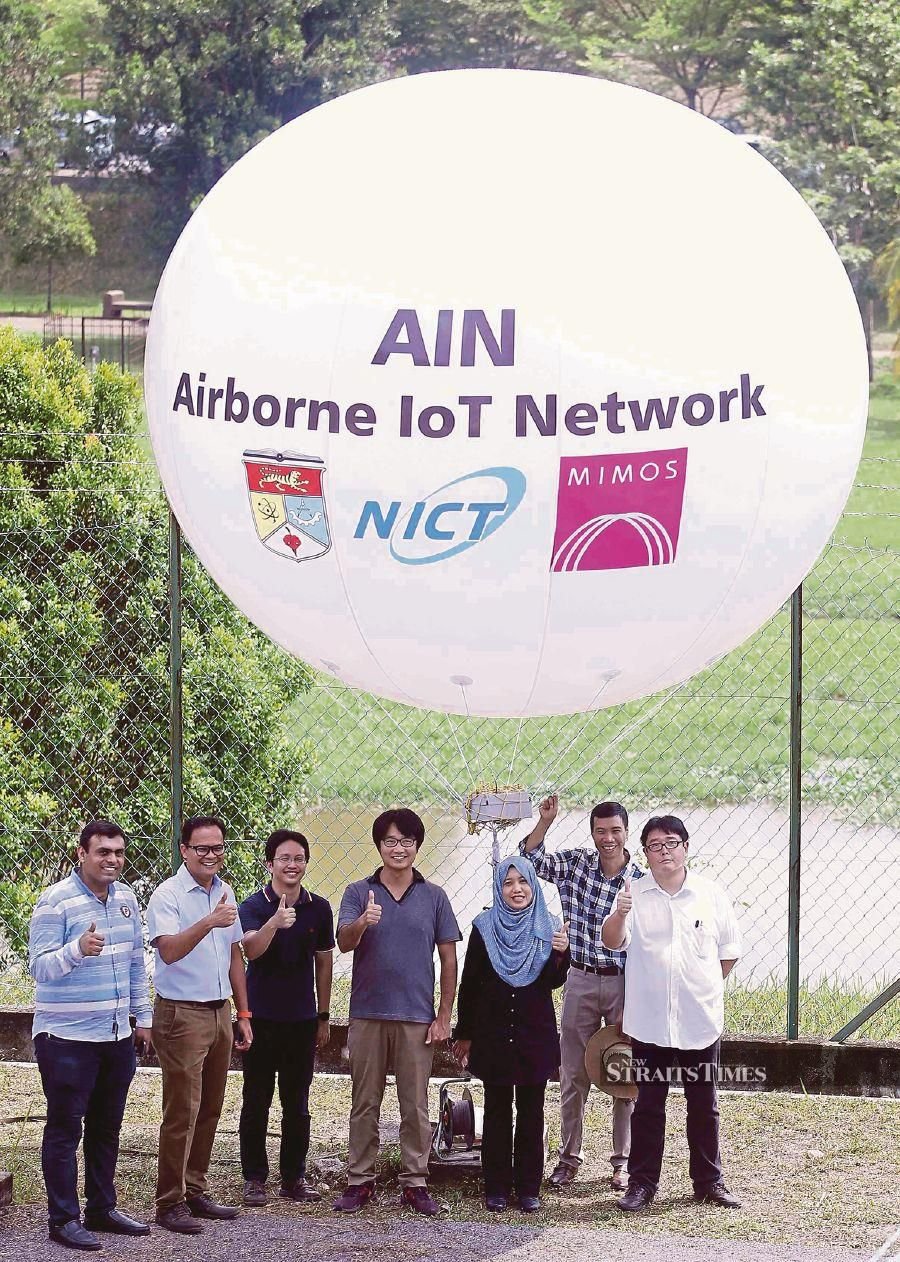IOT to measure Quality of Tasik Chini
Published on by Water Network Research, Official research team of The Water Network in Case Studies

Associate Professor Dr Rosdiadee Nordin (second from left), Dr Kentaro Ishizu (centre), Dr Nor Fadzilah Abdullah (fifth from left) and Dr Fumihide Kojima (right) with the Airborne IoT Network.NSTP/SAIFULLIZAN TAMADI
Over the years, Tasik Chini in Pekan, Pahang, has become increasingly contaminated with toxic waste, which calls for urgent water quality monitoring.
As one of the only two United Nations Educational, Scientific and Cultural Organisation (Unesco) biosphere reserves in Malaysia, the rural lake serves as a sustainable development learning site.
Covering 5,084ha, Tasik Chini is home to 87 species of freshwater fish, 189 species of birds, 51 low-forest species, 15 freshwater swamp forest species and 25 aquatic plants.
The surrounding Orang Asli communities rely on the lake for their food source and daily water consumption.
Due to geographic restrictions, an inefficient manual approach has been used for water data sample collection.
To address this issue, researchers from Universiti Kebangsaan Malaysia (UKM) worked to produce an innovative solution to better monitor Tasik Chini’s water quality and its surrounding environment.
The group aimed to provide an Internet-of-Things (IoT) based solution, which focuses on facilitating Machine-to-Machine (M2M) communication through a wireless sensor network.
Their research led to the creation of the Airborne IoT Network (AIN), which uses a low-altitude wireless M2M platform to establish a reliable line of sight (LoS) for data transmission.
Led by UKM Centre of Advanced Electronic and Communication Engineering (PAKET) vice-chair Associate Professor Dr Rosdiadee Nordin, the project is carried out in collaboration with the National Institute of Information and Communications Technology (NICT) Japan and Mimos Bhd.
The innovation will monitor water quality parameters, such as pH, temperature, water pressure, turbidity and depth.
Rosdiadee said: “Establishing a direct LoS in Tasik Chini is difficult due to to its surroundings, which consists of tall and thick tropical rainforest trees of around 25m in height and hilly terrain.”
“AIN features low-altitude and a narrowband wireless spectrum, which will provide a reliable wireless communications link with better coverage in rural areas, such as Tasik Chini.”
To ensure its sustainability, Rosdiadee said the sensors were powered by traditional batteries and solar energy.
Its “balloon platform” is a superior alternative for remote sensing of water quality compared with a permanent communications tower.
Rosdiadee said: “The lake is surrounded by a dense jungle, so it’s nearly impossible to build a permanent steel structure which would cost over hundreds of thousands of ringgit.
“AIN is a more affordable solution. Aside from that, its balloon system is flexible and practical as it could be deployed anywhere,” said Rosdiadee, adding that its sampling points were scattered across the lake.
The project is funded under the Research University Grant (GUP) from UKM amounting to RM80,000 and a matching grant from NICT that values to about RM70,000.
SOURCE TO COMPLETE ARTICLE ABOUT IOT FOR QUALITY OF Tasik Chini MONITORING
by By Rayyan Rafidi
Media
Taxonomy
- Water Monitoring
- Water Monitoring
- Water Quality Monitoring
- Internet of Things (IoT)